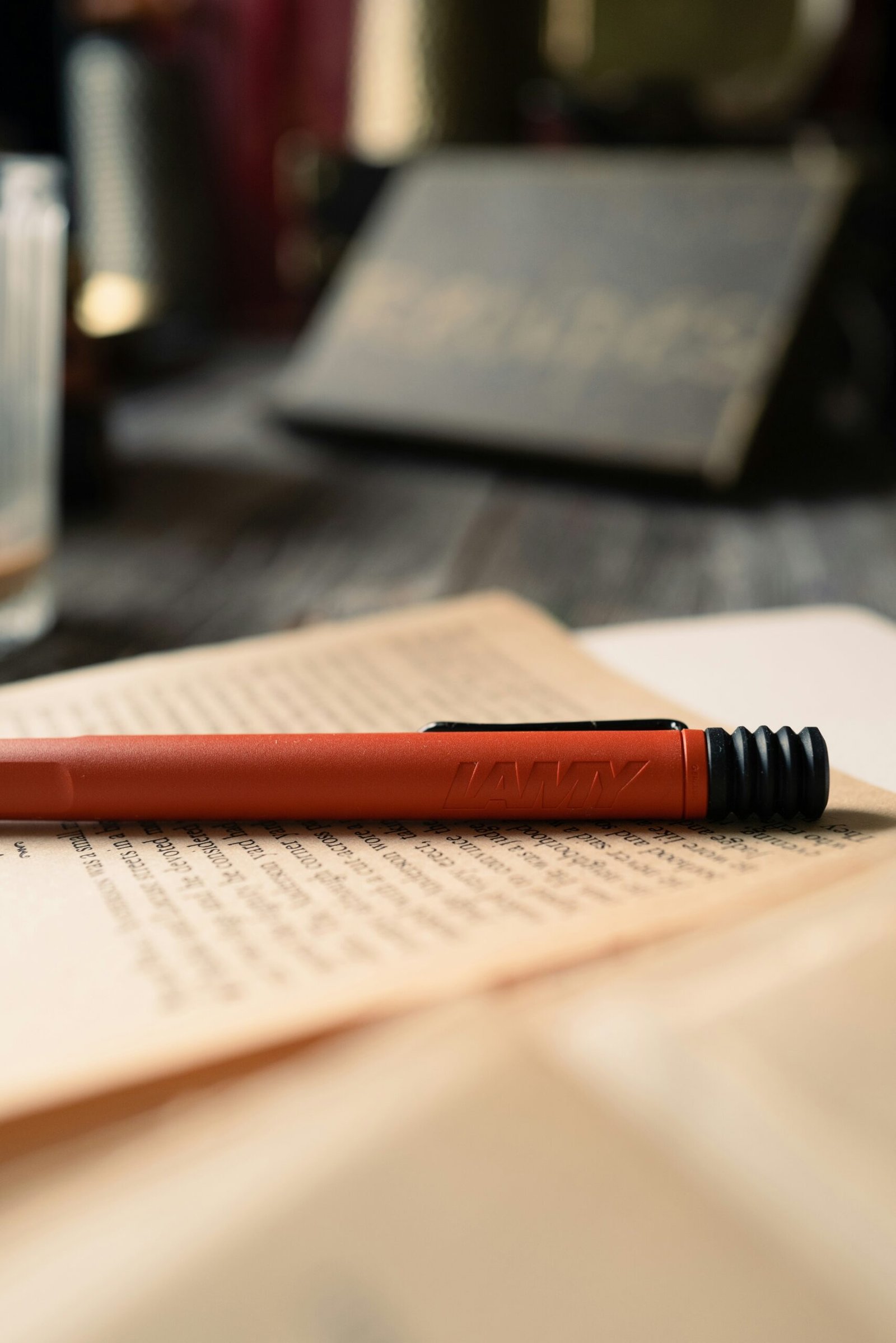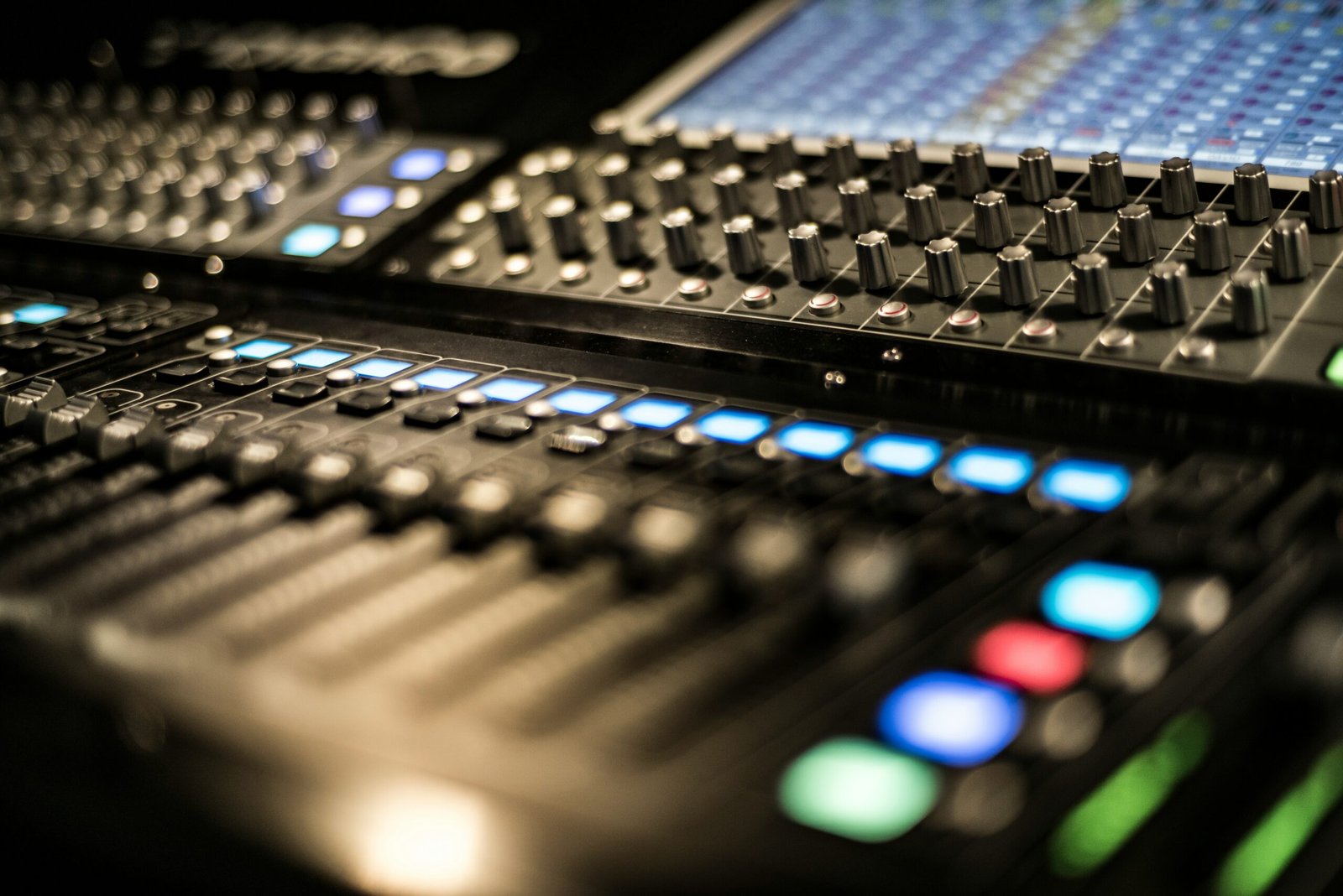Introduction to the Pencil
The pencil, a ubiquitous writing instrument, serves as a crucial tool in education, art, and everyday communication. It typically consists of a long, slender body made from wood or plastic, housing a core made of a mixture of graphite and clay. This graphite core is the key component that enables the pencil to leave a mark on paper when pressure is applied. The composition of the core can vary, affecting its hardness and darkness, which are categorized using a grading scale ranging from hard (H) to soft (B), with the standard HB pencil being a balance of both.
Pencils function through a basic yet efficient mechanism. When a pencil is sharpened, a point is created at the end of the core, allowing it to make direct contact with the surface, such as paper. As the pencil is moved across the surface, the friction causes small particles of graphite to transfer onto it, leaving a visible mark. This method of writing enhances the tactile experience, as users can control the pressure applied, adjusting the darkness of the line to suit their needs.
Beyond their practical utility, pencils also hold historical and cultural significance. The evolution of the pencil reflects advancements in materials and design, influencing various fields from education to artistic expression. Initially, writing was done using ink and quills, but the invention of the pencil revolutionized the way ideas are captured and shared, offering convenience and portability. This versatile writing tool has adapted to the needs of generations, solidifying its place in classrooms and studios across the globe, and fostering creativity and learning in countless individuals. The ongoing relevance of the pencil demonstrates its enduring legacy as a fundamental instrument in human expression.
The Early Beginnings: The Discovery of Graphite
The history of graphite dates back to the 16th century, marking an important milestone in the evolution of writing instruments. The remarkable discovery of this unique substance occurred in Borrowdale, England, where a significant deposit of graphite was unearthed. Initially perceived as a type of lead due to its appearance, graphite was later identified as a distinct mineral made of carbon. This misunderstanding gave rise to the term “pencil lead,” a phrase that remains in common usage today.
Graphite’s properties made it particularly suitable for writing and sketching. Unlike other materials available at the time, such as charcoal, graphite was not only capable of producing a darker line but also had impressive durability. This meant that the marks made by graphite would withstand the test of time, offering clearer communication of thoughts, ideas, and artistic expressions. As a result, it soon became apparent that graphite would revolutionize the way humans documented their thoughts, providing a medium that was both efficient and reliable.
The initial use of graphite involved wrapping the substance in a wooden stick, an early precursor to the modern pencil. As craftsmen experimented with various forms and combinations, the method of encasing graphite in wood was perfected, leading to the invention of the first true pencil in the 17th century. This innovation not only facilitated easier handling but also allowed for controlled application during writing or drawing. As the use of graphite pencils spread throughout Europe, they quickly gained popularity among scholars, artists, and everyday communicators alike.
In essence, the discovery of graphite marked the foundation upon which the modern pencil was built. Its unique qualities set the stage for a widespread adoption that would influence writing, education, and art profoundly.
The Invention of the Modern Pencil
The modern pencil, as it is known today, emerged in the late 18th century, marking a significant shift in writing instruments. Prior to this innovation, early writing implements primarily consisted of styluses, quills, and lead-based mechanisms. The introduction of graphite in the early 1560s provided new possibilities, but it was not until the late 1700s that the pencil underwent transformative advancements. The breakthrough came from the realization that encasing graphite within a wooden body offered a practical solution for both ease of use and portability.
The method of encasement was popularized by the English toolmaker and inventor, Joseph Hardtmuth, in 1790. Hardtmuth’s innovation allowed for the production of pencils that were not only functional but also aesthetically pleasing. This period also saw the standardization of pencil leads, utilizing varying degrees of hardness, which catered to different writing and drawing needs. The introduction of different lead formulations facilitated a wider range of artistic expression and improved the overall functionality of the pencil.
Moreover, the manufacturing processes began to evolve remarkably. Craftsmen started employing better techniques for sharpening the encased graphite and enabling the creation of pencils that could be produced en masse. This transformation greatly increased accessibility, allowing students, artists, and the general population to utilize pencils extensively. Alongside Hardtmuth, other notable inventors contributed significantly to pencil design, including the German carpenter, Caspar Jung, who created the first wooden pencils with manufactured leads in 1889. Their collective efforts set a precedent, paving the way for the mass production of pencils that included various features, such as erasers and varying designs.
This pivotal period laid the groundwork for the modern writing tool. The pencil’s evolution is a testament to human ingenuity, resulting in a simple yet profound instrument that has shaped writing, education, and art for centuries.
The Pencil and Education: A Revolutionary Tool
The introduction of the pencil revolutionized educational practices, providing students with a versatile and efficient tool for writing and learning. Prior to the pencil’s widespread use, students often relied on quills or chalk, which were less practical and slower in terms of generating written content. The ease of use provided by pencils allowed learners to focus on their thoughts rather than the mechanics of writing, significantly enhancing the learning experience.
In the 19th century, when pencils became more readily available, schools began to integrate them into their curriculums. This shift not only facilitated faster note-taking but also promoted creativity among students as they could easily erase mistakes and refine their ideas. The ability to revise work with minimal effort encouraged a more dynamic approach to learning, enabling students to express themselves without the fear of making permanent errors. As a result, learners exhibited increased confidence in their writing abilities and engagement in educational activities.
The impact of pencils on literacy rates cannot be overstated. The accessibility of writing materials played a crucial role in fostering literacy among diverse populations, ensuring that more individuals had the opportunity to learn to write and communicate effectively. As education systems adopted the pencil, students from various backgrounds were able to participate in formal education, leading to an overall increase in literacy.This accessibility was particularly significant in the context of the industrial revolution when education became essential for the workforce.
The pencil not only contributed to the democratization of education but also laid the groundwork for modern pedagogical methods. With the pencil firmly established as a fundamental tool in educational settings, teachers were better equipped to nurture students’ writing and critical thinking abilities. This combination of accessibility and utility illustrates the pencil’s enduring influence on education, making it an indispensable component of the learning journey.
Pencils in Art: A Medium of Expression
The pencil has long been a central tool in the world of art, serving as a versatile medium for expression, sketching, and detailed rendering. Artists, both past and present, have relied on pencils for their ability to provide fine control over line work and shading techniques. From the softest graphite to vibrant colored pencils, the diversity in pencil types has enabled artists to explore various styles and nuances in their creations.
Historically, the evolution of the pencil can be traced back to the introduction of graphite in the 16th century. Artists quickly recognized graphite’s unique properties for drawing. Initial uses were simplistic; however, as pencil manufacturing advanced, artists gained access to a range of hardness levels. The modern numbering system, where H denotes harder lead and B signifies softer lead, allowed for greater precision and control—an essential aspect in the intricacies of artistic representation.
The capabilities of pencils extend beyond mere outlines. Many artists employ them for shading, where the gradation of pressure and angle results in rich textures and dimensionality. Techniques such as cross-hatching and stippling are commonly used to create subtle transitions, adding depth and form to artworks. Pencils have also found their way into mixed media, often serving as a foundation upon which other materials, like ink, paint, or charcoal, are layered.
In contemporary art, the pencil continues to play a significant role. Innovative techniques have emerged, such as the manipulation of pencil shavings or the use of colored pencils to create vibrant, textured compositions. Today, artists explore a blend of traditional and modern styles, ensuring that the humble pencil remains a cherished medium of expression. As the art world evolves, it is evident that pencils will continue to shape the creative landscapes of both established and emerging artists.
The Pencil Industry: Growth and Innovation
The pencil industry has undergone remarkable transformation since its inception, evolving from a simple writing tool into a robust economic sector. Initially relying on rudimentary materials, manufacturers quickly recognized the potential of pencils as versatile instruments for writing, drawing, and broader educational purposes. The result was a surge in production, leading to significant developments in the way pencils were made and marketed.
During the 19th century, several notable brands emerged, solidifying their presence in the market. Companies such as Faber-Castell, Dixon Ticonderoga, and Staedtler became synonymous with quality and innovation, setting industry standards that are still influential today. These brands not only improved the durability and functionality of their products but also engaged in clever marketing strategies, establishing a loyal customer base. This period marked a shift where pencils were not merely tools but also lifestyle products, being marketed for both practical applications and artistic expression.
Innovations in manufacturing processes have also played a significant role in the growth of the pencil industry. Mechanization allowed for mass production, which in turn lowered costs and made pencils more accessible to a global audience. Furthermore, the introduction of specialty pencils, such as colored pencils, mechanical pencils, and graphite variants, expanded their applications within education and the arts. Today, consumers benefit from a diverse range of products tailored to different preferences, whether for high-quality sketching or precise writing.
As the demand for eco-friendly products rises, the industry continues to adapt. Manufacturers are increasingly turning to sustainable materials and practices, striving to reduce environmental impact while maintaining performance standards. This commitment to innovation not only helps brands stay competitive but also reflects a growing consciousness among consumers about sustainability. Overall, the pencil industry exemplifies a dynamic economic sector that has continuously evolved to meet changing market demands and technological advancements.
Cultural Impact: The Pencil as a Symbol
The pencil, a seemingly simple tool, has transcended its primary function of writing to embody a rich cultural significance across various domains. Throughout history, the pencil has emerged as a powerful symbol of creativity, innovation, and education. In art, it serves as a foundational instrument, allowing artists to sketch, plan, and experiment with their ideas, thus playing an essential role in the creative process. The pencil represents the moment when a thought takes form, paralleling human innovation and the artistic journey.
In the context of education, the pencil has become synonymous with learning, serving as a primary writing instrument for students around the globe. Its use in schools reflects the values associated with knowledge acquisition and the shaping of intellect. The simple act of writing with a pencil signifies the beginning of education and the empowerment that stems from the ability to express oneself. Furthermore, the adaptability of the pencil, which can be erased and revised, mirrors the educational journey, emphasizing that learning is an ongoing process of trial and error.
Beyond the realms of education and art, the pencil finds its significance deeply embedded in literature and common culture. It has been featured in various literary works as a metaphor for expression, reflection, and the complexity of human thought. Additionally, the mental image of a pencil often evokes a sense of nostalgia, symbolizing the handwritten letters and notes that have historically played a pivotal role in personal communication. As cultural practices evolve, the pencil remains a steadfast emblem of what it means to think critically and create meaning, reflecting its multifaceted role in the tapestry of human expression.
The Transition to Digital: Pencils in the Modern Age
As technology rapidly advances, the educational landscape and artistic expression have evolved significantly, leading to unprecedented challenges and adaptations for traditional writing tools such as pencils. The rise of digital devices has undoubtedly transformed how we write, communicate, and create. However, the pencil continues to hold its place within the modern age despite fierce competition from tablets, computers, and smartphones.
In the realm of education, while digital tools enhance the learning experience with interactive applications, the tactile quality and simplicity of a pencil remain indispensable for various reasons. Traditional pencil writing promotes cognitive processes that are vital for understanding and retention. Studies have shown that writing by hand facilitates deeper learning compared to typing on a keyboard. This aspect underscores the enduring relevance of pencils in classrooms, as educators continue to advocate for their use in early literacy development and note-taking.
Furthermore, the pencil has found resilience through adaptation in the face of digitalization. The introduction of digital styluses marks a significant merger of traditional writing techniques and modern technology. These styluses mimic the pencil’s form and function, allowing users to experience the familiar sensation of writing, drawing, or sketching on screens. Companies have innovated to create digital tools that provide the same fluidity and precision as traditional pencils, which in turn fosters a dual approach to creativity—merging hand-drawn artistry with digital capabilities.
In conclusion, while the digital age has introduced new writing methods and tools, pencils maintain their significance in education and art. The ability to combine both traditional and modern elements reflects an evolving landscape where pencils continue to shape writing practices, reminding us of their enduring charm and utility even amidst the digital revolution.
Conclusion: The Enduring Legacy of the Pencil
The pencil has traversed a remarkable journey since its inception, evolving from simple graphite sticks to sophisticated writing instruments that enhance our creativity and communication. Its influence permeates various domains, including writing, education, and art, establishing it as an indispensable tool in both historical and contemporary contexts. As an instrument of expression, the pencil has allowed generations to document their thoughts, ideas, and dreams, effectively shaping the written word.
In educational settings, the pencil has played a pivotal role in fostering literacy and learning. It serves as the primary tool in classrooms around the globe, empowering students to engage with their coursework actively. The tactile experience of writing or sketching with a pencil encourages cognitive development and aids memory retention. The pencil’s erasable nature also supports a growth mindset in learners, allowing them to experiment freely without the fear of making irreversible mistakes.
Beyond education, the pencil’s significance in the arts cannot be overstated. Artists have long favored pencils for their versatility, precision, and accessibility. From initial sketches to detailed renderings, the pencil enables a seamless transition between ideas and execution. Moreover, pencil drawings continue to hold a prominent place in the contemporary art world, showcasing the medium’s diverse potential and timeless appeal.
Ultimately, the pencil’s enduring legacy is characterized by its adaptability and relevance across various fields. It remains a testament to human creativity and the desire to communicate ideas effectively. As we advance in a technology-driven era, the humble pencil continues to occupy a cherished space in our everyday lives, proving that even in a digital world, traditional tools retain their significance and charm.



